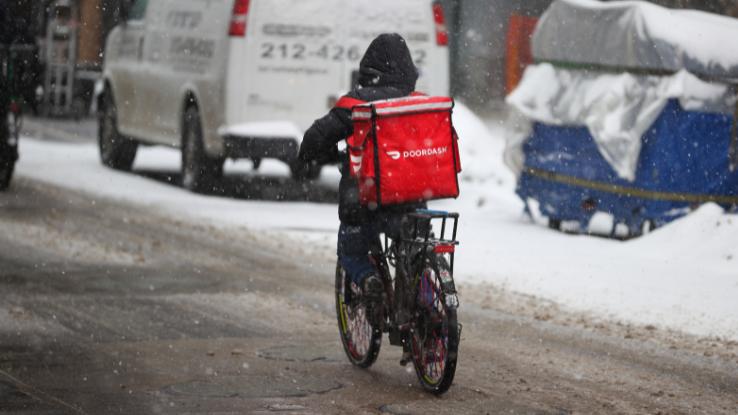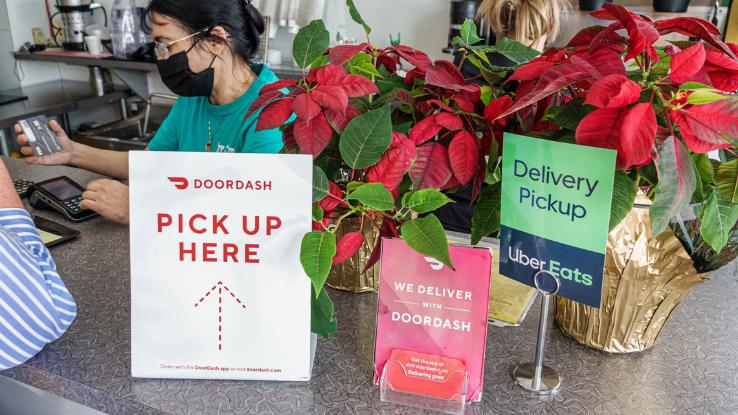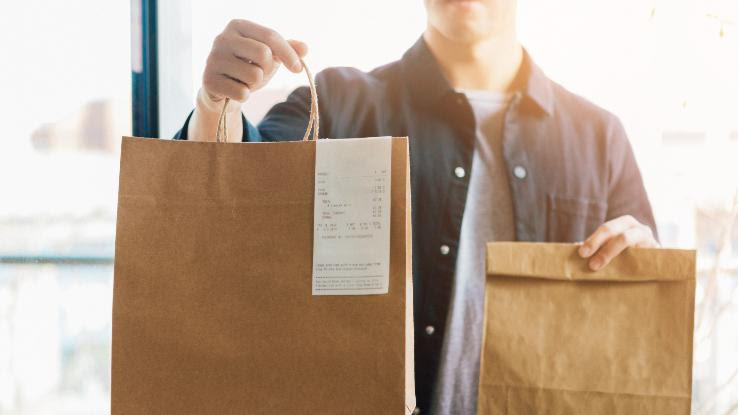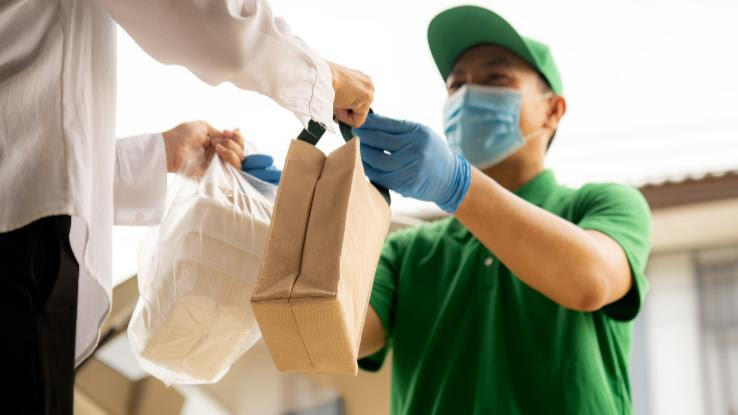How Much Does It Cost To Start A Food Blog

During the ongoing COVID-19 pandemic, food delivery services like DoorDash, Grubhub, Uber Eats and Postmates have suddenly became indispensable for many people trying to stay close to home. Moreover, even though public dining rooms were closed in many states for much of 2020, such services allowed restaurants to remain in business.
Unfortunately, that's only one side of the story. As more information comes to light, it's becoming clear that food delivery apps come with their own set of cons — and costs. And we're not just talking financial costs. Here, we'll take a look at the hidden costs that third-party delivery services pose and the ways these services impact everything from restaurants' income to the environment.
Given that many businesses would have otherwise shuttered during the height of the COVID-19 pandemic, it's easy to assume that food delivery services are popular among restaurant owners and workers. After all, look how many of them chose to sign up as partners, right? Well, things may not be as they seem. As Mathieu Palombino, owner of New York City-based Motorino Pizza, recently told CNN, signing up for food delivery services is sometimes less a matter of convenience and more a matter of necessity.
"The worst thing that has ever happened to us is them," Palombino said of delivery service Seamless, which is owned by Grubhub. Before food delivery apps became all the rage, Motorino Pizza had its own delivery system — one that worked just fine for the restaurant and its customers. Now, however, Palombino feels that failing to sign on with a third-party delivery service would severely undercut sales, as many customers only opt to order from restaurants listed on these apps.

While such a listing may indeed help up a restaurant's customer base grow and encourage folks to actually place orders, the added publicity doesn't come without a cost. Unfortunately, most delivery services charge their "partner restaurants" a premium fee — sometimes of up to 30%. Not to mention, the equipment and sign-up fees that some businesses end up paying to delivery services can cost a bit. For smaller restaurants, this can quickly cut into their profits, and, at times, leave them in the red.
Additionally, restaurants miss out on controlling how their deliveries are made; a bad customer service experience may not stop someone from using DoorDash again, but it could cause them to associate the negative experience with the restaurant and avoid it in the future.
The Gig Worker Question
While signing up as a food delivery driver can be a great way to earn some supplemental income, it's not necessarily a gig that many people are able to rely on full-time. This seems especially true for people who are trying to support a family without another source of income.

Drivers for companies like DoorDash are paid a flat rate for each delivery they make, which ranges from $2–10 based on a variety of factors. In the end, however, many Dashers are heavily reliant on tips to make the gig worth their time. If they are unlucky enough to get hit with a long wait time at a restaurant or non-tipping customer, however, a driver's pay rate can easily fall well below the minimum wage mark.
Then you have to consider that, as independent contractors, drivers are also responsible for taking their own taxes out of the income they receive each month. Add that to the necessity of supplying their own car (or bike), gas, insurance, and other benefits — and, soon enough, it becomes clear why most drivers make food delivery a side hustle, not a primary job, if they can.
How Our Obsession with Takeout Impacts the Environment
Okay, so being able to have food delivered right to your door is pretty awesome, right? During unprecedented circumstances, like the COVID-19 pandemic, it may have even saved a few lives. But given what we've learned over the last year plus, it may be time to look at the hit our planet is taking from our newfound love of food apps.

All those takeout orders have to be delivered in something — often single-use paper or plastic food containers, cups, and silverware. Every year, Americans throw away 120 billion disposable cups, the majority of which are not recycled or composted. That equates to about 11 million felled trees every year, and that's just to fuel our disposable cup habit. Not to mention, the 2.2 billion pounds of waste and a CO2 build-up, which is equal to that produced by around 366,384 cars.
That said, there is hope on the horizon. A new company called Go Box has come up with a promising, easy way to eliminate our massive container problem. The company produces zero-waste, reusable takeout containers and cups. Currently, Go Box is starting out in Portland, Oregon and San Francisco, California — a city that's already banned plastic bags and straws as well as styrofoam cups and containers in favor of wholly compostable and/or recyclable alternatives. So, how does Go Box work? When a customer orders food from a participating vendor, they can check out with a reusable box and, later, drop it off at a Go Box collection site. From there, the company collects, washes, redistributes the containers. For now, Go Box offers customers a monthly subscription of $3.95.
Convenience vs. Increasing Delivery Costs
You're not wrong if you're starting to feel like ordering takeout through Grubhub, Postmates, or other food delivery services is a lot more expensive than it used to be. A recent survey by the BBC discovered that ordering from a third-party delivery service can increase the price of your order by up to 44%. Why all the price hikes?
Some of it goes back to one of the things we've already mentioned: the commission that delivery apps charge restaurants to be listed on their platforms. Some cities, such as Los Angeles and Philadelphia, passed laws to help local restaurants during the pandemic by capping the commission rate that third-party food delivery services could charge. Unfortunately, some delivery services found ways to make up the difference by passing the costs along to customers. This can come in the form of tacked-on "service fees" or even higher prices for the food on the menu itself.

In all fairness, the menu-based price hikes often go back to the restaurants themselves, but it's due to the fact that they are attempting to make up for the commissions they're being forced to pay. Regardless, before you put in your next order for third-party delivery, it wouldn't hurt to see how much it'd cost to order directly from the restaurant itself.
MORE FROM ASKMONEY.COM
How Much Does It Cost To Start A Food Blog
Source: https://www.askmoney.com/budgeting/food-delivery-service-costs-doordash-grubhub?utm_content=params%3Ao%3D1465803%26ad%3DdirN%26qo%3DserpIndex
Posted by: toppandever.blogspot.com

0 Response to "How Much Does It Cost To Start A Food Blog"
Post a Comment